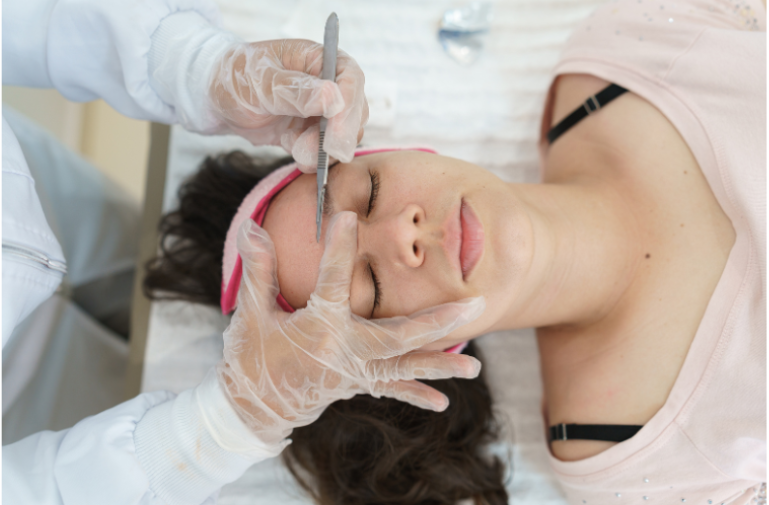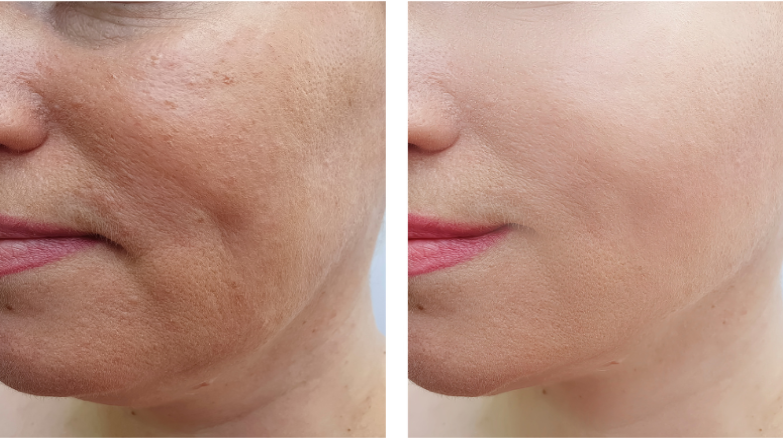Is Dermaplaning Right for You? Here’s What to Expect
.png)
When life’s moving fast, does your skincare routine start to feel like just one more thing to squeeze in? You’re doing your best to stay consistent, but between work, errands, and everything else on your plate, your skin might not always get the attention it deserves.
Therefore, when you come across a treatment that promises smoother, brighter skin with no downtime, it’s natural to be a little curious, especially if it’s something you haven’t heard much about.
Dermaplaning is one of those treatments that sounds a little mysterious at first. It’s often mentioned in beauty circles, but what does it actually do? Is it safe for sensitive skin? And what should you expect if you decide to try it?
If you’re looking for something that fits into a busy schedule and leaves your skin feeling fresh and renewed, dermaplaning might be worth exploring.
In this article, you’ll get a closer look at what dermaplaning is, how it works, and what to expect during a session, so you can decide if it’s the right match for your skin.
The Basics of Dermaplaning
If you’re new to dermaplaning, it helps to start with the basics. Knowing what the treatment involves and how it benefits your skin can make it easier to decide whether it belongs in your routine.
What It Is
Dermaplaning is a non-invasive exfoliation treatment that uses a surgical-grade blade to gently remove dead skin cells and fine facial hair (often called peach fuzz). While the idea of a blade might sound intense, the process is gentle, painless, and surprisingly relaxing. Because it doesn’t rely on chemicals or abrasions, it’s an appealing option for anyone looking for a fresh glow without downtime.
What It Does for Your Skin
The immediate results are one of dermaplaning’s biggest perks. By removing the top layer of buildup, your skin is left smoother and brighter. You’ll also notice that your skincare products absorb more effectively, and your makeup goes on like a dream. It’s a small treatment with a big payoff—perfect for busy schedules and special occasions alike.

Common Misconceptions About Dermaplaning
Even though dermaplaning is becoming more popular, there’s still plenty of confusion surrounding it. If you’ve ever hesitated because of something you heard, you’re not alone.
What You Might Have Heard
It’s common to come across a few myths, like:
- Dermaplaning is only safe for certain skin types
- It causes hair to grow back thicker or darker
- It leads to breakouts
These misconceptions often make people miss out on a treatment that could actually work well for them.
What You Should Know Instead
The truth is that dermaplaning is safe for most skin types, including sensitive skin. The hair that’s removed grows back just as it was—fine and soft. As for breakouts, many clients find that their skin actually improves when dead skin and buildup is removed properly. When performed by trained professionals and followed with proper care, dermaplaning can be a skin-friendly step in your regimen.
Who Can Benefit from Dermaplaning
Now that you know what dermaplaning really does (and doesn’t do), the next question is whether it’s right for you.
Great for Those Who Want
If you’re dealing with dry patches, dullness, or simply want a smooth canvas before a big event, dermaplaning is worth considering. It’s also a great option if you prefer a physical exfoliation method over chemical ones and want to see results quickly without irritation.
When It Might Not Be the Best Option
However, dermaplaning isn’t ideal in every situation. If you have active acne, rosacea flare-ups, or are using strong retinoids, you may need to wait or explore other treatments first. Your provider will help you decide what is safe and effective for your current skin condition.

What to Expect Before, During, and After Treatment
Feeling informed before an appointment can take the guesswork (and nerves) out of the experience. Here's how to prepare, what to expect, and how to care for your skin after.
Before Your Appointment
A few simple steps can help your skin respond well to dermaplaning. Skip retinoids and exfoliants a few days in advance, and arrive with a clean, makeup-free face. Don’t be shy about discussing any sensitivities or skin goals with your provider—they’ll tailor the treatment accordingly.
During the Appointment
The treatment itself usually takes 30 to 45 minutes. Most people describe it as a gentle scraping sensation, like a soft brush against the skin. There’s no pain, no redness, and no need to cancel your plans afterward. Many clients walk out with skin that looks refreshed and feels baby soft.
After Your Treatment
Post-care is minimal but important. Stick to mild products, moisturize well, and avoid exfoliants for 24 hours. And most importantly, don’t forget sunscreen—freshly exfoliated skin is more vulnerable to sun exposure, and SPF will help preserve your results.
Reveal Radiant Skin with Pellé Medical Skincare
Glowing skin doesn’t have to involve guesswork or downtime. If you’ve been searching for a simple, effective way to refresh your face, dermaplaning could be just the thing.
At Pellé Medical Skincare, we make your experience comfortable, personalized, and professional. Whether it’s your first time or you’re ready to add dermaplaning to your regular skincare routine, our team is here to help your skin feel its best.
Schedule your consultation today and uncover your healthiest glow.

